There is a powerful argument to be made for photographing what intrigues you, what you love, or that by which you are obsessed. Making photographs takes time, so that curiosity, love, or obsession serves you well when your best work demands not fractions of a second or even minutes, but hours, days, or—in the case of longer projects—even years.
Bears have become a growing obsession for me. I don’t know where it comes from or what part of me these bears touch so deeply, but it’s not unlike the feeling I get in the presence of other large creatures like leopards, lions, sharks, or whales. Maybe it’s the notion of something bigger than I am—something so entirely other.
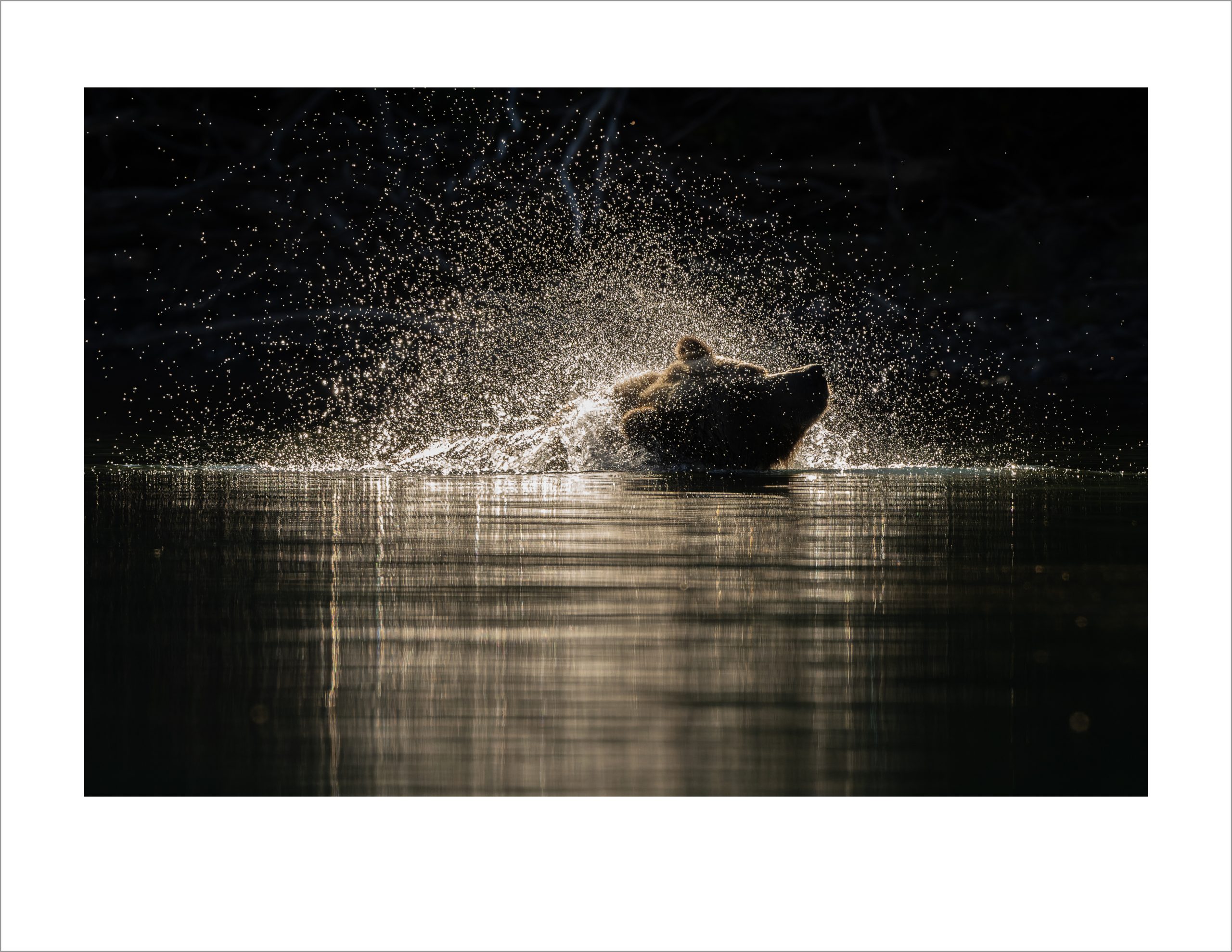
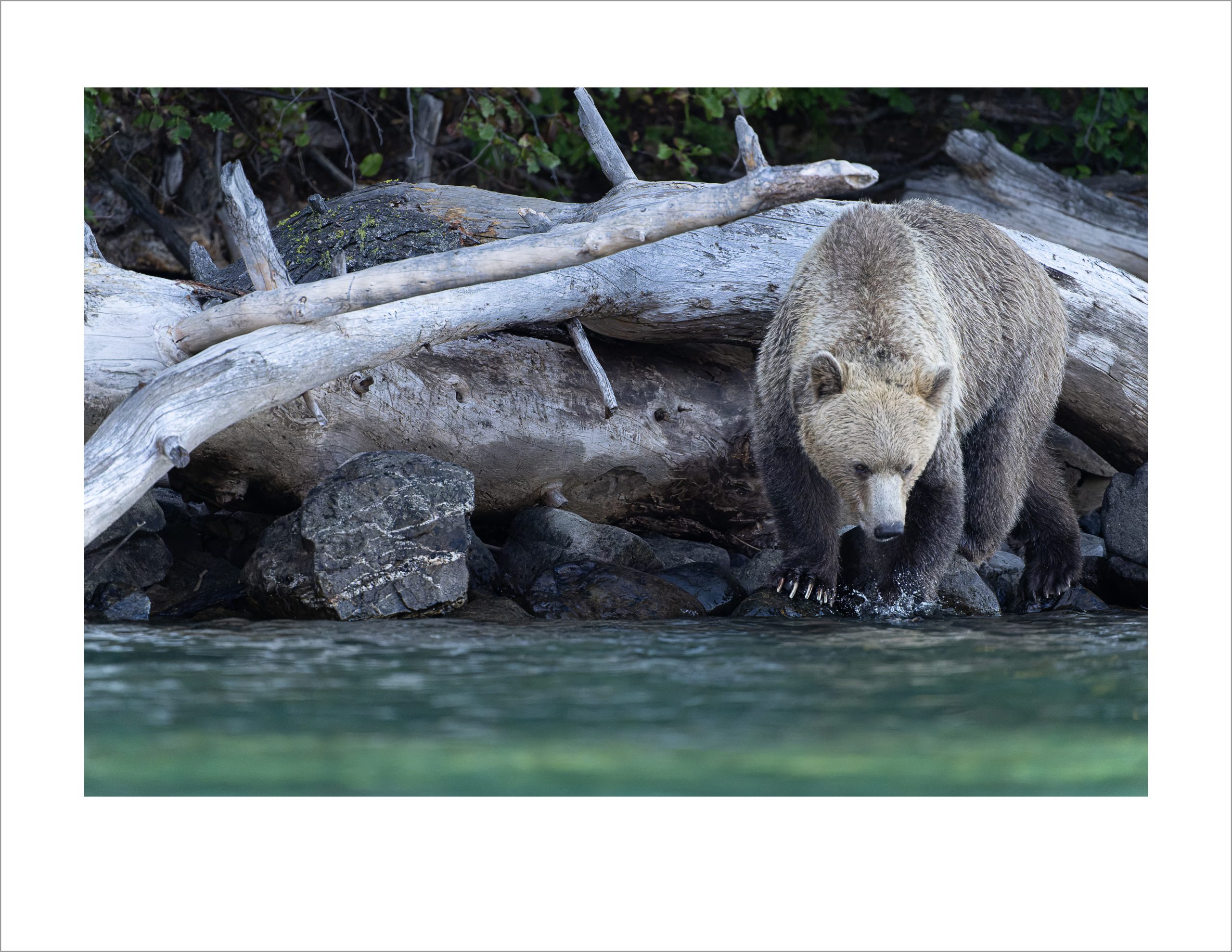
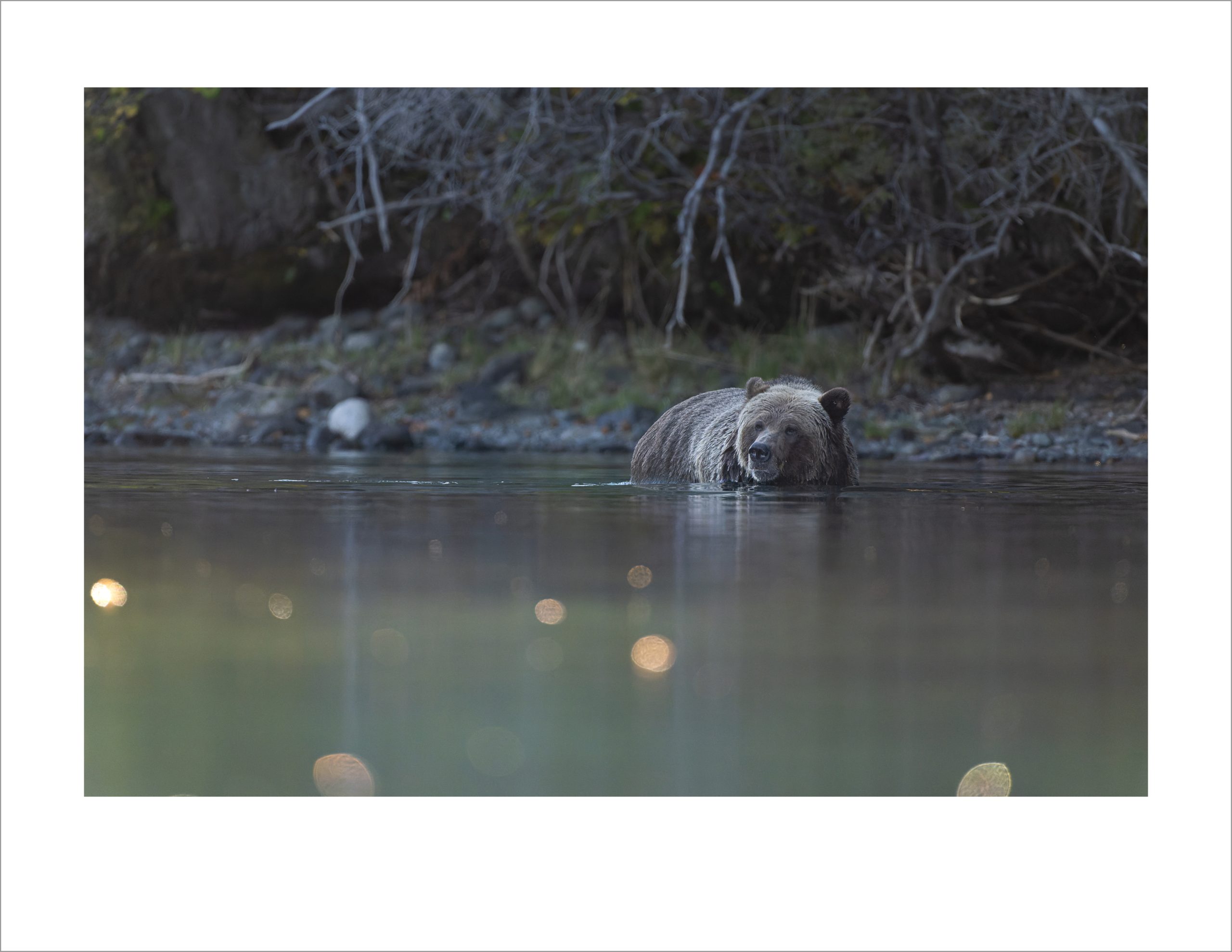
I’ve just come back from another ten days with the grizzly bears on the shores of the Chilko river. They converge every year in the fall as the salmon arrive in their hundreds of thousands (a million this year) to spawn where they themselves were spawned four years prior. Those salmon have spent the last three years in the ocean and have now climbed 3,000 vertical feet to return here to guarantee there will be the next generation, and then they die and return their nutrients to the water, the bears, and the forest. For their part, the bears have come to feast and fatten before climbing the nearby mountains and denning for the winter at 8,500 feet. The females who have mated earlier in the year will depend on this food. If they reach 33% body fat or higher, they will become pregnant through delayed implantation as they lie in their dens, gestate for only six weeks, and give birth over the winter. When fall comes, those cubs (known as cubs of the year) will join their mother as she teaches them to fish and feast on the salmon.
So on September 28, I loaded my gear into Lucy (remember Jessie, the Defender, and Emily, the Jeep? Lucy is a new-to-me Toyota Tacoma that has recently become my new adventure partner) and headed north, picking my way through the coastal mountains and lakes around Whistler and Lillooet before driving through the stunning Cariboo and Chilcotin—the foliage on the aspens at their golden climax—and finally to the Chilko River, filled with a million sockeye flashing red under bluebird skies. It’s a place of such wild beauty that it’s hard not to get a little wordy about it.
After ten days of photography, I drove home with hard drives full of images and a heart and mind filled with memories of bears swimming through waters so heavy with reflections that they might as well have been swimming through paint. And the light! The backlight, the reflections, and the colour still blow my mind days later as I work my way through the photographs I made.

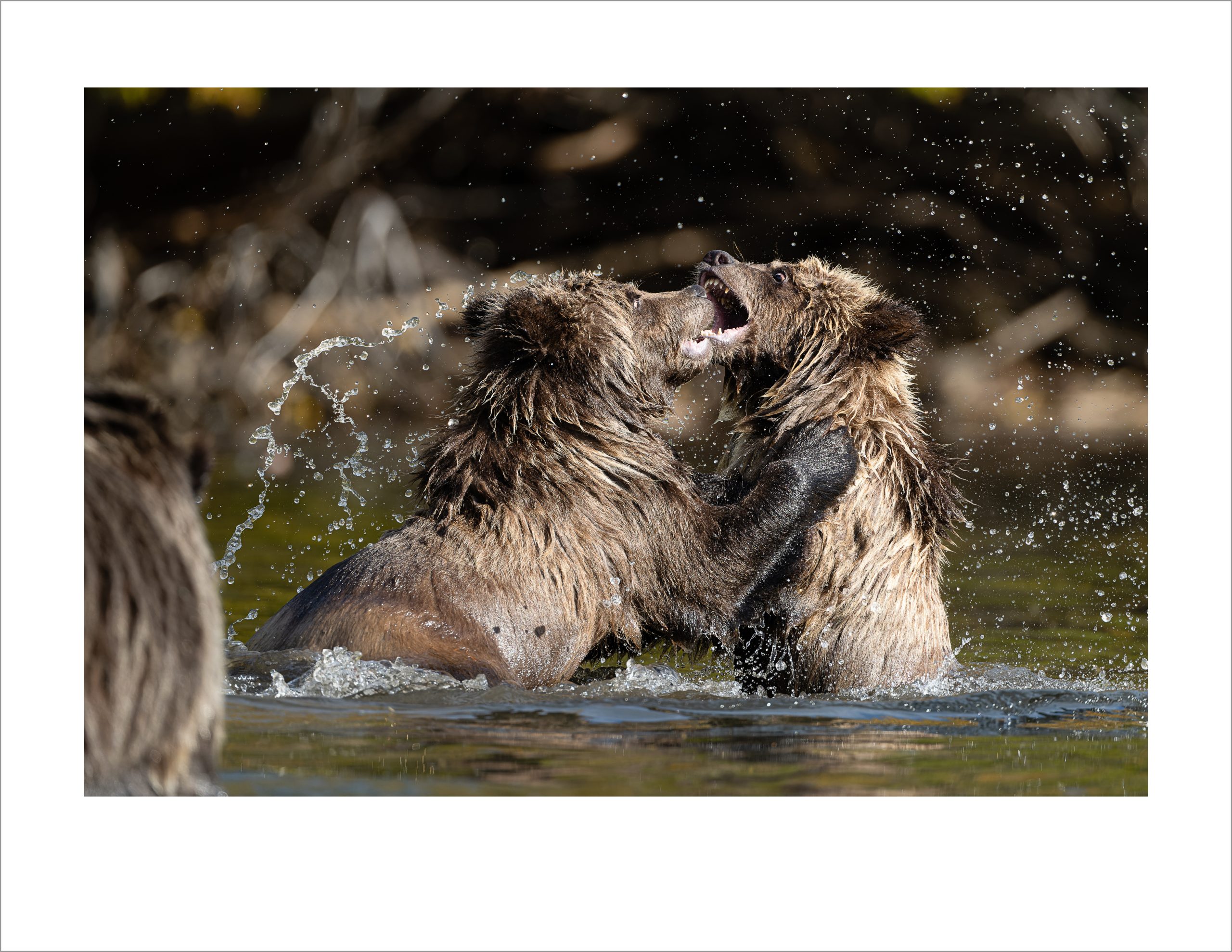
This last trip marks the beginning of my second year with Sony gear. I came home a little frustrated with the limits of my FujiFilm gear last year, finally admitting to myself that what it did so well on the streets it didn’t do so well with wildlife. The focus speed and the availability of truly world-class optics for the Sony make my work so much easier (not necessarily better; that’s on me).
I’m now using a couple of Sony a1 bodies and primarily shooting a 600/4.0 lens, and though I’m not a “gear guy” in the way some photographers are, I’m almost ashamed to admit how much I love this gear. It just does what it’s meant to when I need it to, and after the frustrations I had with FujiFilm, it’s refreshing to put the camera to my eye and nail the focus the first time, which means fewer unpleasant surprises. So for those of you who have recently asked if I’m happy with my move, I couldn’t be happier. I don’t love the Sony brand (it’s not sexy the way Nikon or Leica is), and I don’t love the ergonomics the way I loved my FujiFilm cameras, but the performance is out of this world better for me.
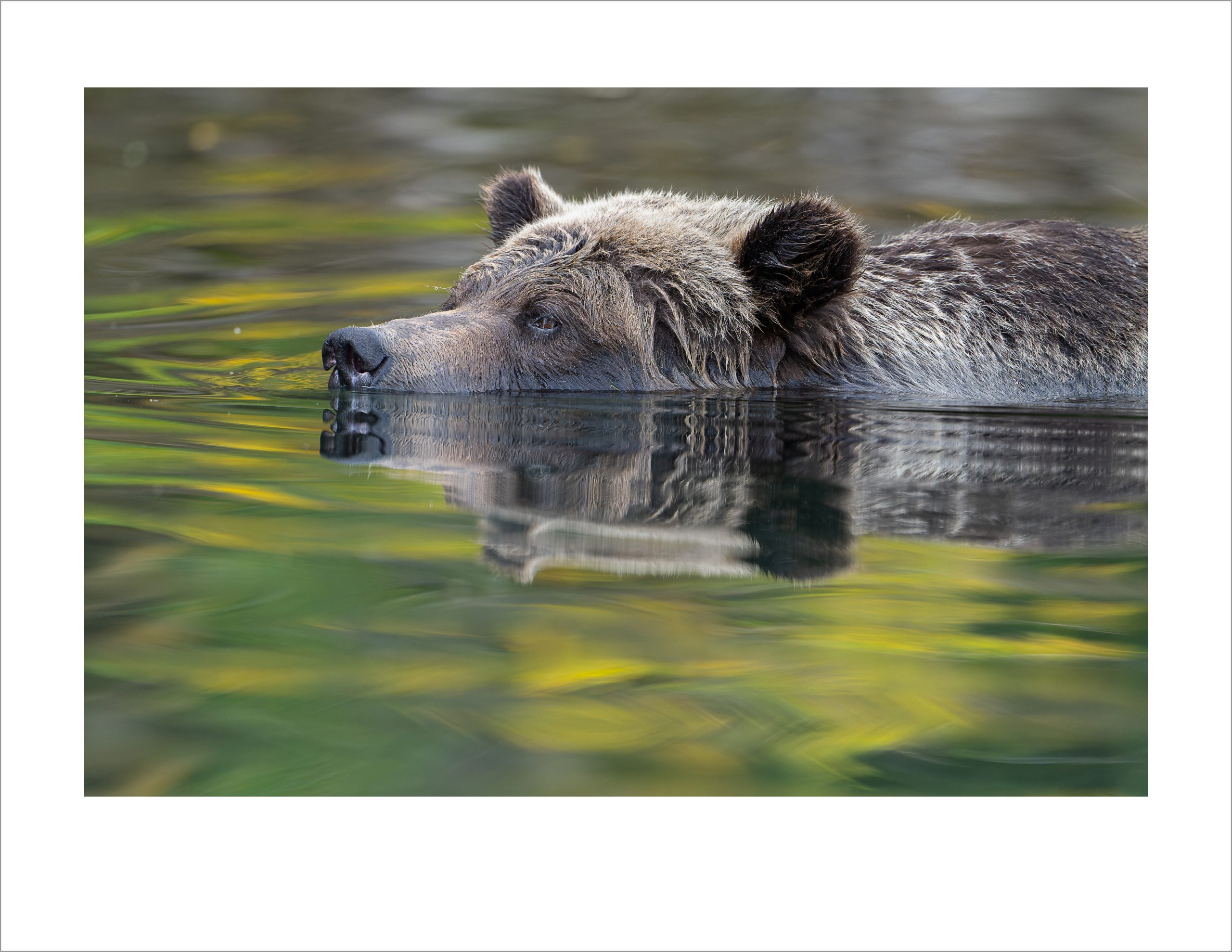
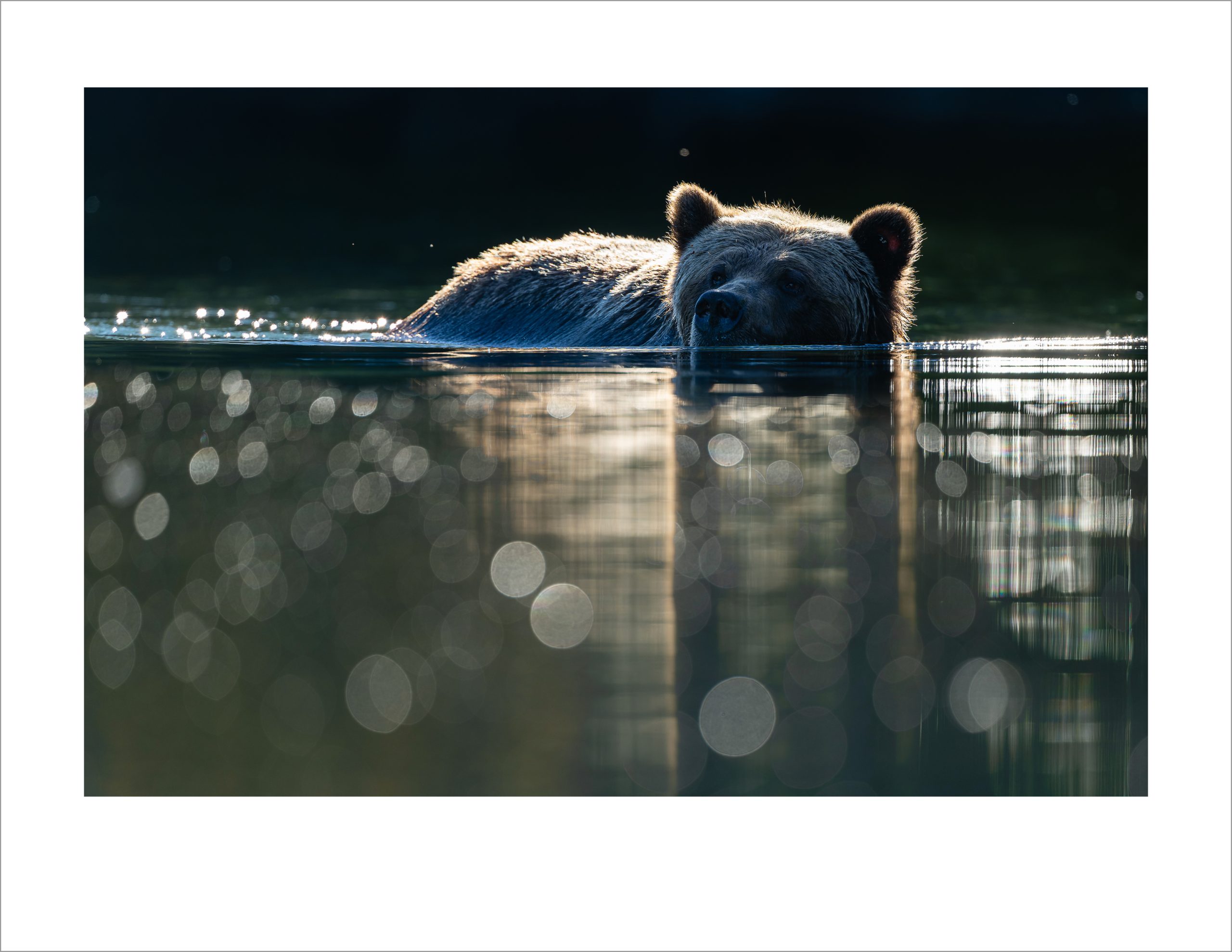
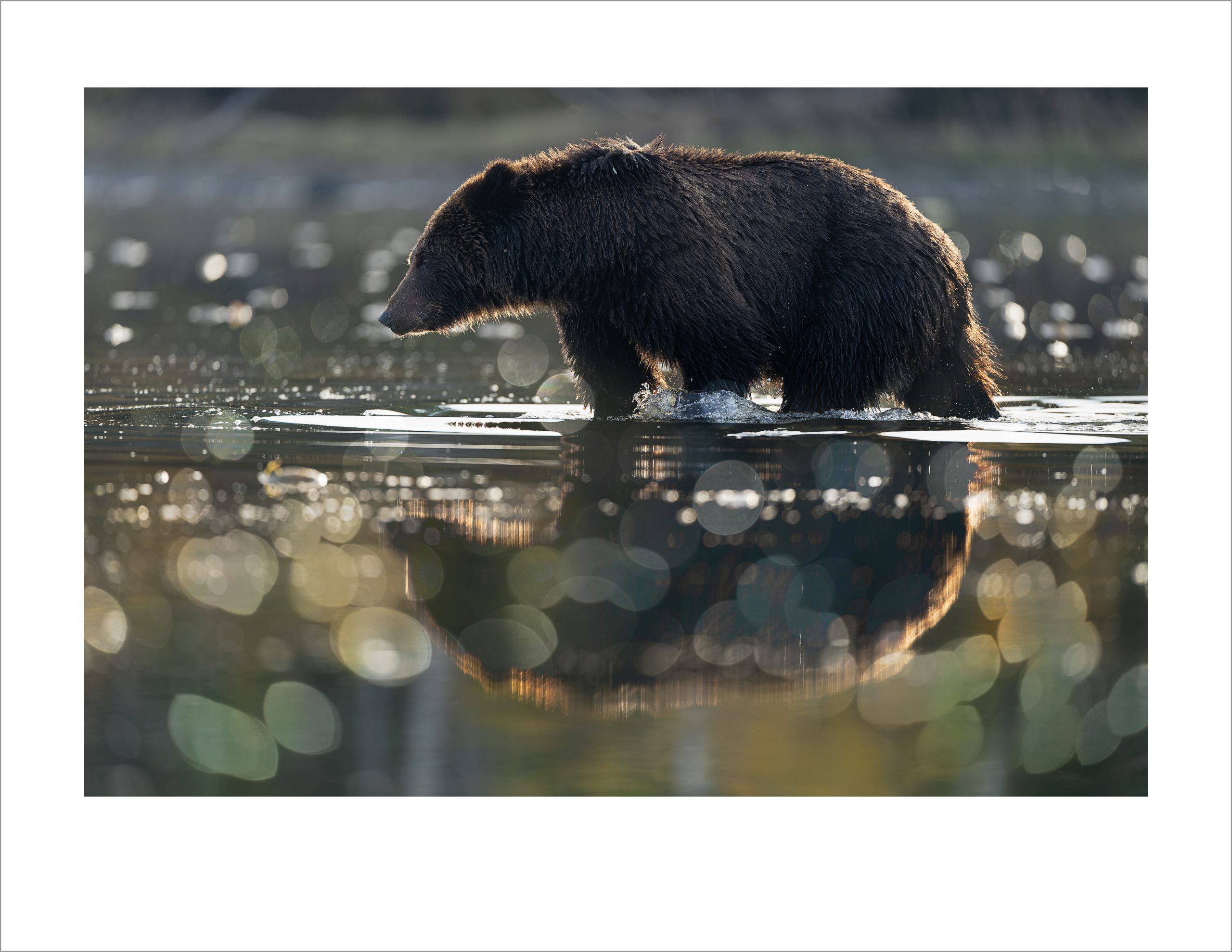
I am shooting at higher ISOs now, not so much because my wildlife work happens in darker situations (though that is sometimes the case), but faster-moving critters demand higher shutter speeds (1/1000+) than I ever needed on the streets (often closer to 1/30 or slower). So I’m regularly hitting ISO 6400, and while the thought of that once terrified me (I still remember stressing out about going to ISO 800 on my early digital cameras), I’m much more relaxed about it now—but I haven’t always been happy with the results. Enter DxO PureRAW 2.
PureRAW 2 is a plug-in for Lightroom, though it can also be used as a stand-alone product. It’s a little clunky to use, but the results are astonishing. I’ve been a bit frustrated with my own efforts at noise reduction and sharpening in Lightroom, so I asked my best friend Jon what he uses, and because he’s much smarter than I am, I decided to give it a try. I’ll let you read the online reviews for yourself if you’re into that, but I wanted to at least alert you to it because I’m honestly gobsmacked by what I’m seeing.
Here’s a brief overview: import your images, find the best of the best, and then (here’s where it gets clunky) choose your image (or folder of images) and go to File > Plug-in Extras > Process with DxO PureRAW 2. A dialogue then appears, you set a couple of preferences (like what you want to name the new file(s)) and hit the Process button. PureRaw 2 then creates a new sharpened and de-noised (and lens-corrected) DNG file for you. It also renames it according to your preference (I add DxO to the end of my file name), and it then puts it where you want it. Now you can process the new DNG file the way you normally would. And if you’ve already done your development, let’s say with years of older images you’d like to clean up, there’s no need to start over; your changes will all stick in the new DNG file.
So how good is it? The noise reduction, sharpening, and lens corrections all happen together and dramatically exceed my own efforts. You probably already know that I don’t get too excited about how sharp images are. If that’s what people are commenting on, then you’re probably not making very interesting photographs. But if noise or lack of sharpness are getting in the way of what your photographs could be, then I say use whatever it takes. Maybe I’m late to the party on this one (story of my life), but if you’ve never heard of DxO PureRAW 2, then check it out (and yes, it now works with FujiFilm X-trans files, of which I have thousands and a few that will really benefit from what PureRAW 2 can do). Here are before and afters on two of my images that I think show the results quite well:
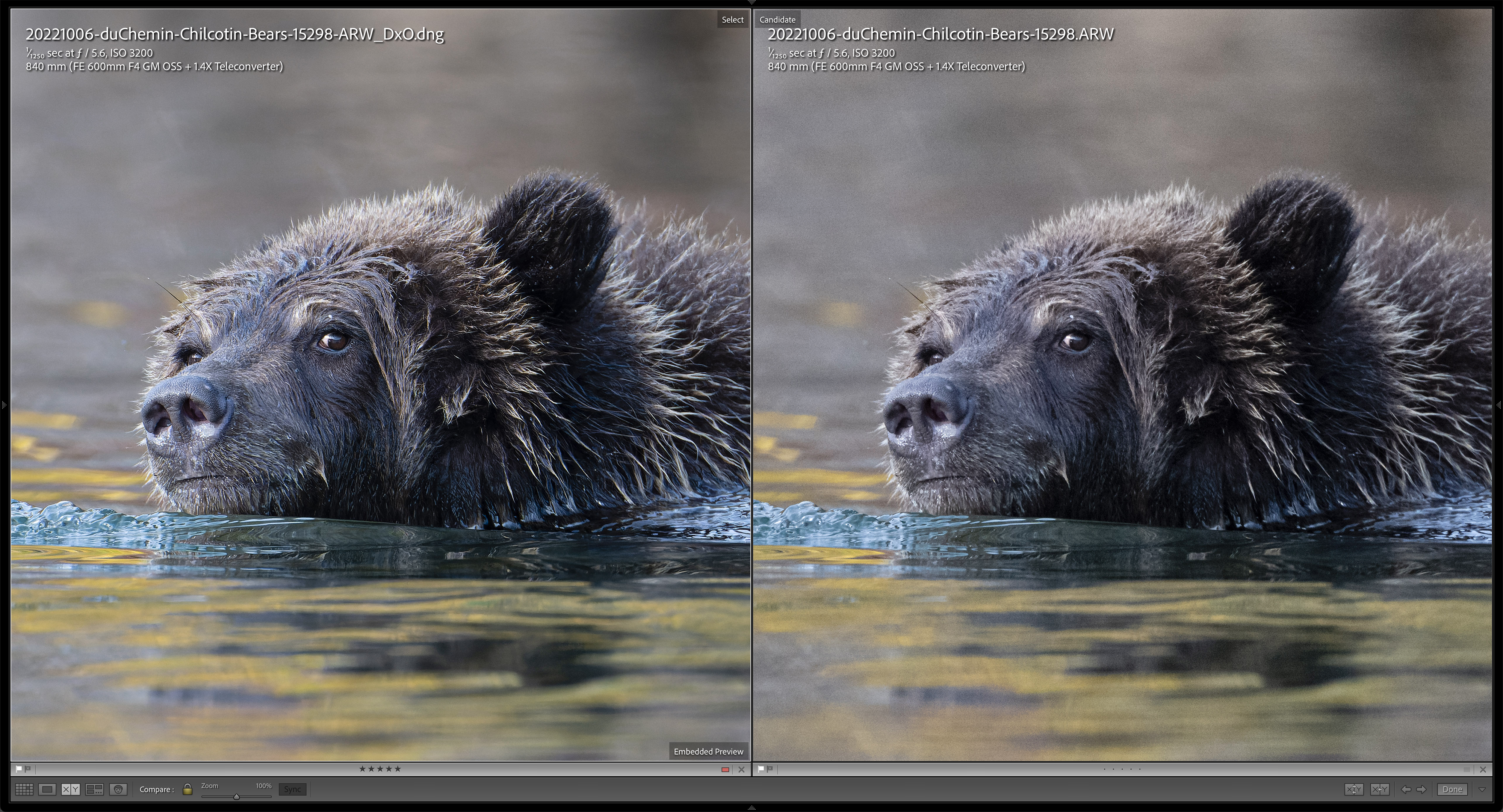
Above: On the left is an image from my Sony a1 processed with DxO PureRAW 2. On the right is the file without corrections, on the left is the cleaner file. This is viewed at 100%. Click the image to see it full-size in a new tab.
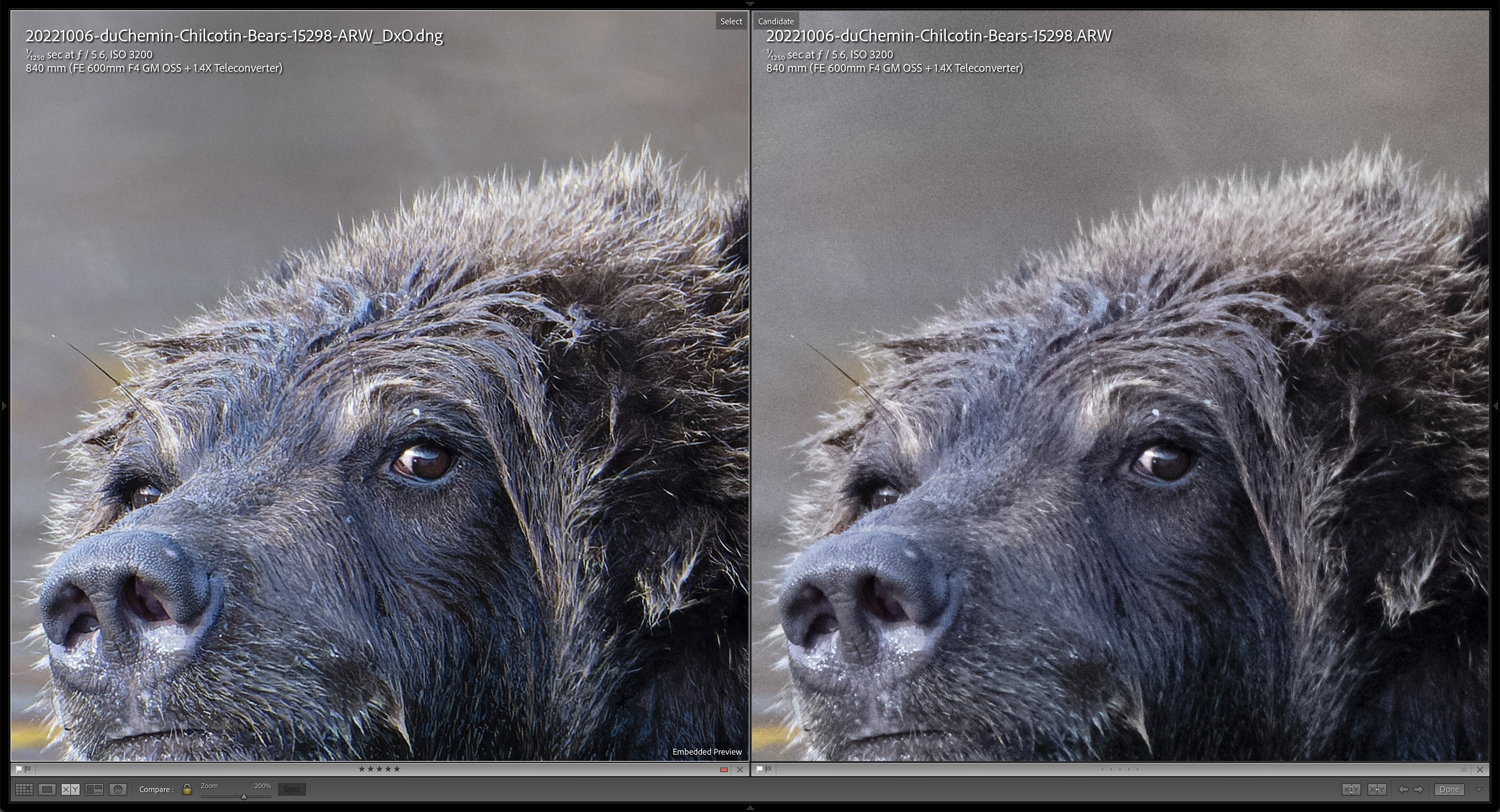
Above: The same image from my Sony a1 viewed at 200% – the cleaned up image is on the left, the “before” version is on the right. Click the image to see it full-size in a new tab.
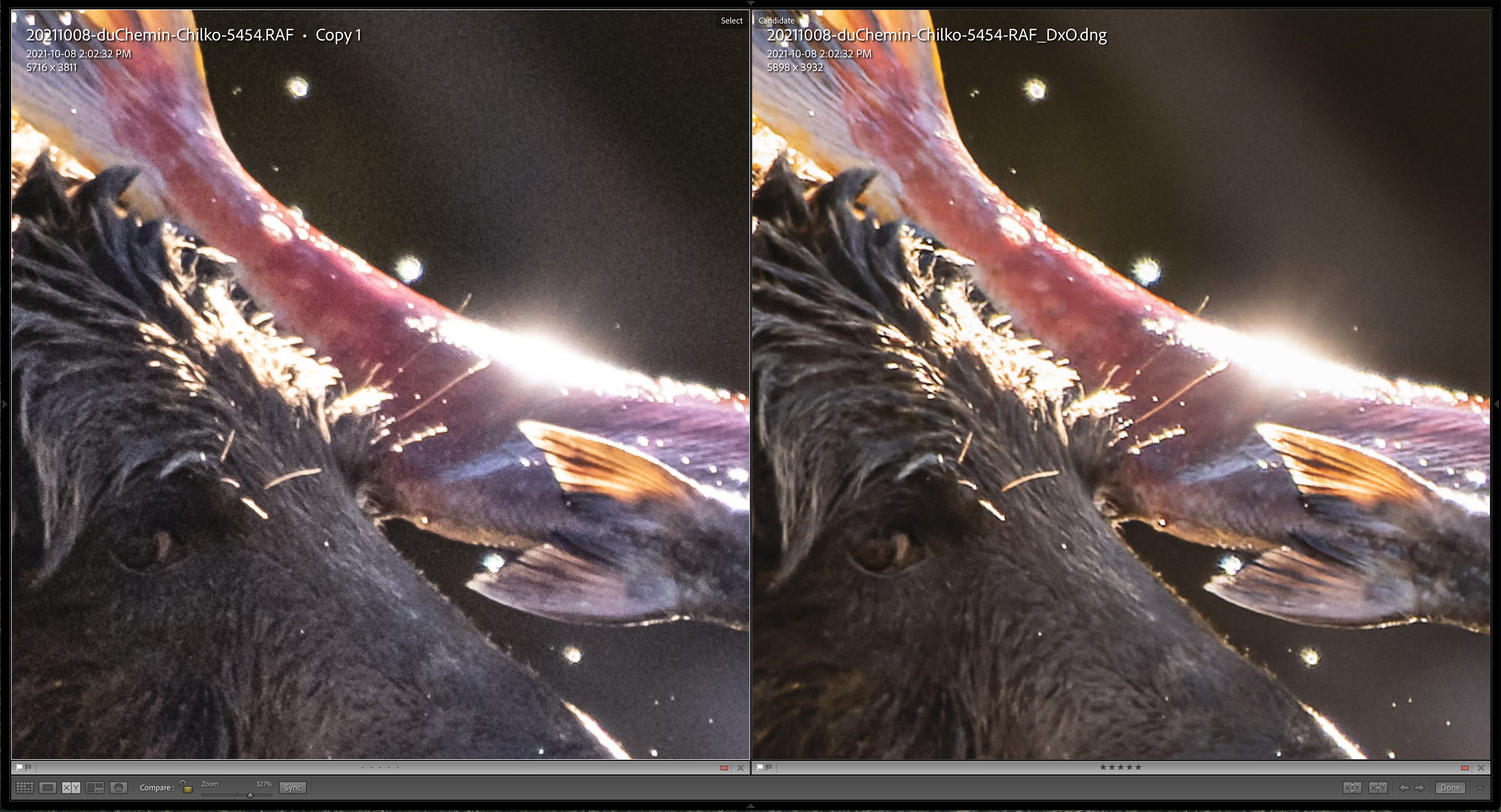
And here’s a before and after on one of the images I made with my Fuji X-T3 last year because I know Fuji users tend to get the short end of the stick on stuff like this. The before image in this case is on the left, the version processed with DxO PureRAW 2 is on the right. Click the image to see it full-size in a new tab.
For larger prints, this is going to change everything and make me much happier with the resulting photographs.
By the way, the DxO people wouldn’t know me from Adam, so I’m not getting a penny for talking about it (I paid full price for my version), and I’m not recommending the product so much as saying, “Hey, look what I found!” My own exploration of this plug-in is very new at this point, but so far, I’m really impressed. DxO offers a 30-day free trial here, and is only USD$129 to purchase. Not to overstate it, but it might be the best $129 I’ve spent on my photographs in a long time.
Enjoy the bears! I’m off to Churchill, Manitoba, to photograph polar bears next week. I’ll touch base when I’m back!
For the Love of the Photograph,
David
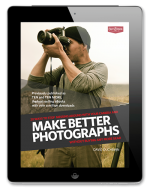
PS – Want more like this? I send these articles out every two weeks to photographers around the world who want to improve their craft and explore their creativity and I’d love to include you. Tell me where to send it and I’ll send you a copy of my best-selling eBook Make Better Photographs, as well bi-weekly articles, first-glimpse monographs of my new work, and very occasional news of resources to help you keep moving forward in this craft we love.
“Each and every one of your emails inspire and motivate me to want to jump right out of my chair away from my computer and shoot for the love of it . Thank you David.” – Millie Brown

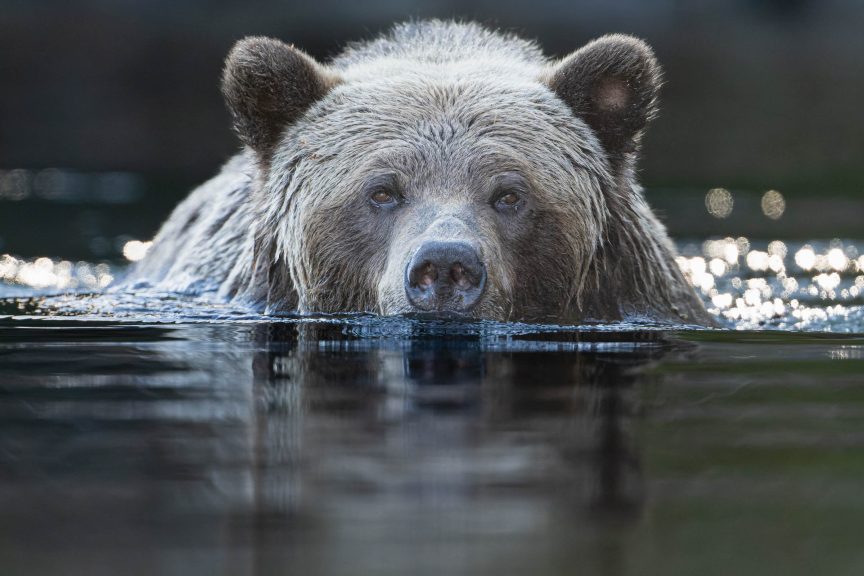
Comments
As none of my files in lightroom are converted to dng on import is this likely to be problematic if I use this software on some of them? I’m not sure I want some images as dng while the other raw files aren’t.
Hi Alison! No, no problem at all. I haven’t converted a file to DNG for years. So my library is all assorted files, lately all ARW files. But DxO PureRaw2 makes another file, does all the magic, and gives you a DNG file. I don’t see any issue at all in having a mix of file types. I keep my DxO master files clearly marked and know exactly where they are so there’s no confusion.
Love the bokeh and the sharpness. I would be interested in your aperature settings for those shots with the bokeh. I know you have a comparatively short depth of field, maybe 15 or twenty feet and your long lens? I’ve been working o. This I’m my studio but haven’t mastered it. Thanks David so much! These pictures are an inspiration!
Jeri Abel
Thanks, Jeri. Those would be wide open on my 600/4.0, so f/4.0 most of the time, or if my 1.4x teleconvertor was on, /5.6.
Amazing photographs David. I also like the way they are sequenced in the Monograph. I guess that no one wants to be too close to hungry bears (hence the 600mm), but I would like to know how far you where to get so sharp pictures.
Thanks and greetings from France.
Thanks, Patrick. Proximity to the bears was always at their initiative and according to their comfort. The 600mm lens makes very close encounters unnecessary. But hungry bears are not a problem – they don’t see us as food. As long as you respect them and let the bears guide the encounter, there’s no threat. They just want to eat the salmon. 🙂
I love the personalities that come out in this work David!
Thank you, Rebecca. That’s exactly the word I am thinking of as I photograph bears: personality. They are such individuals. I hope you’re well.
David, I was compelled to leave a comment on your blog (or any other blog) for the 1st time ever for 3 reasons. 1) I’ve enjoyed ALL your previous bear photos, as well as your other images/monographs/books for some time now. Grizzly bears for some reason have always attracted me, maybe their size & power, but these new ones of yours present a very personal, special side to them. Thank you for your perspective and talent! 2) I have had the Nikon DSLR version of your Sony 600mm f4 lens for primarily bird shoots for a while…..these lenses are really fabulous regardless of brand! And 3) I started with Pure Raw, quickly upgraded to PR2 and agree with your perspective. In case you, or other folks following this blog haven’t used it that much, I’ve found the Deep Prime option is great for images at higher iso and higher contrast (deep shadows). However on lower iso (<400-500?, camera dependent) and lower contrast images it can be heavy handed. In those cases the HQ option is sufficient without over-sharpening. I'm very glad you are you, keep the wonderful images flowing, and enjoy the polar bears!!
Hey glad to hear your input Tim! I use PR2 as well. I notice on some lower ISO that it does appear a little heavy handed as you said. I’ll try selecting the HQ option for those for future.
Thanks so much for that, Tim. Much appreciated. 🙏
This is really neat, David. I’m glad to read this article in particular in regards to the DXO Pure Raw 2
I love the bear photos. Especially the one of the two younger looking bears playing in the water.
I always appreciate your commentary on how photographing your passion and obsession benefits your photography.
Glad to hear you are enjoying the new Sony tools. I recently added an older model Sony to my tool bag and it’s been working perfectly for the exact purposes I acquired it.
Look forward to the next set of bear photography.
Best,
Kyle Reynolds
Thanks, Kyle! Coming right up! 🤞🤞🤞
Thank you for the story and the great images!
Interesting that you found PureRAW. I use DxO Photolab for my images, with the same excellent optical corrections and NR as PureRaw. Export to TIF or DNG, if I want to develop the DNG in Picture Window Pro 7 (which uses the HSV color space, preserving bright colors better than RGB). Never looked back to ACR or Lightroom.
I’ll take a look at bear-camp.com!
Good morning from Maine. These are beautiful, David, & the corrections seem a fitting refinement of your aesthetic. There’s a tool for every job, eh? No apologies necessary.
Cheers,
C
Topaz makes some really fine noise and sharpening software, just thought I throw that into the ring….🙃
Hi David, beautiful and full of life and soul image of bears. No wonder you love them so! What lenses were you using to capture these beauties?
Thanks, Susan. Almost all of them were made on a Sony 600/4.0, some with an added 1.4x teleconverter, and some with the Sony 100-400mm.
Some great images David!
Kind of you to say, David. Thank you. 🙏
Hi David,
I’m 10 days into my free trial of PureRAW 2, so funny that I just got this email. I wasn’t expecting anything much from it but was completely blown away. Running 24MP full frame images through it I’m finding I’m getting twice the resolution and pretty much able to double my print sizes. I’m even going back and reworking some of my older photos and still seeing a significant improvement even in 10 year old cameras.
Thanks for that, Shawn. We’re in about the same time on this and my findings are the same as yours. I’m no pixel-peeper, but some of the results I’m getting make me want to be! (Just kidding. Kind of). 🙂
Realy impressive. Gerrit
Thank you, Gerrit!
We love your bears!! Where did you stay while on your adventure–lodge or camping? We would love to go to see those bears next year. Thank you.
Thanks, Nancy. Check out Bear Camp – https://bear-camp.com/ – Brian and his team do an amazing job of running a wonderful operation. Great people, great food, and AMAZING bears.
Amazing everything here. Bears, Sony, cool programs, bokeh that’s making my head spin. Glorious. Miss you friend!
Miss you too! We need to set up a visit!
Great images! Glad you’re enjoying your Sony (after selling me on Fuji 😂…well, you and others and it does meet my needs). I’ve already been using PureRaw 2 for a while now. Incredible piece of software!
Oh sure, and you kept the PureRAW to yourself. Geez, after all I’ve done for you… 😂
🥹😂
Thanks for the bears this morning. I thought you might enjoy this Lyle Lovett cover of Steven Fromholz’s song “Bears”.
https://youtu.be/4v4owphgX84
That was awesome, Rodney! Thank you for that. Gotta get the chords for that song and learn to play it on guitar for next year’s trip to bear camp!
Thank you, David, for this great story (you’re a wonderful storyteller anyway) and the background information. I loved the images and thank you for the Monograph. A couple of days ago I received the Remembering Bears book and your images would have looked great in that book too.
Looks like I need to look up the Remembering Bears book – I didn’t know it was out. Thank you Betty-Lou!